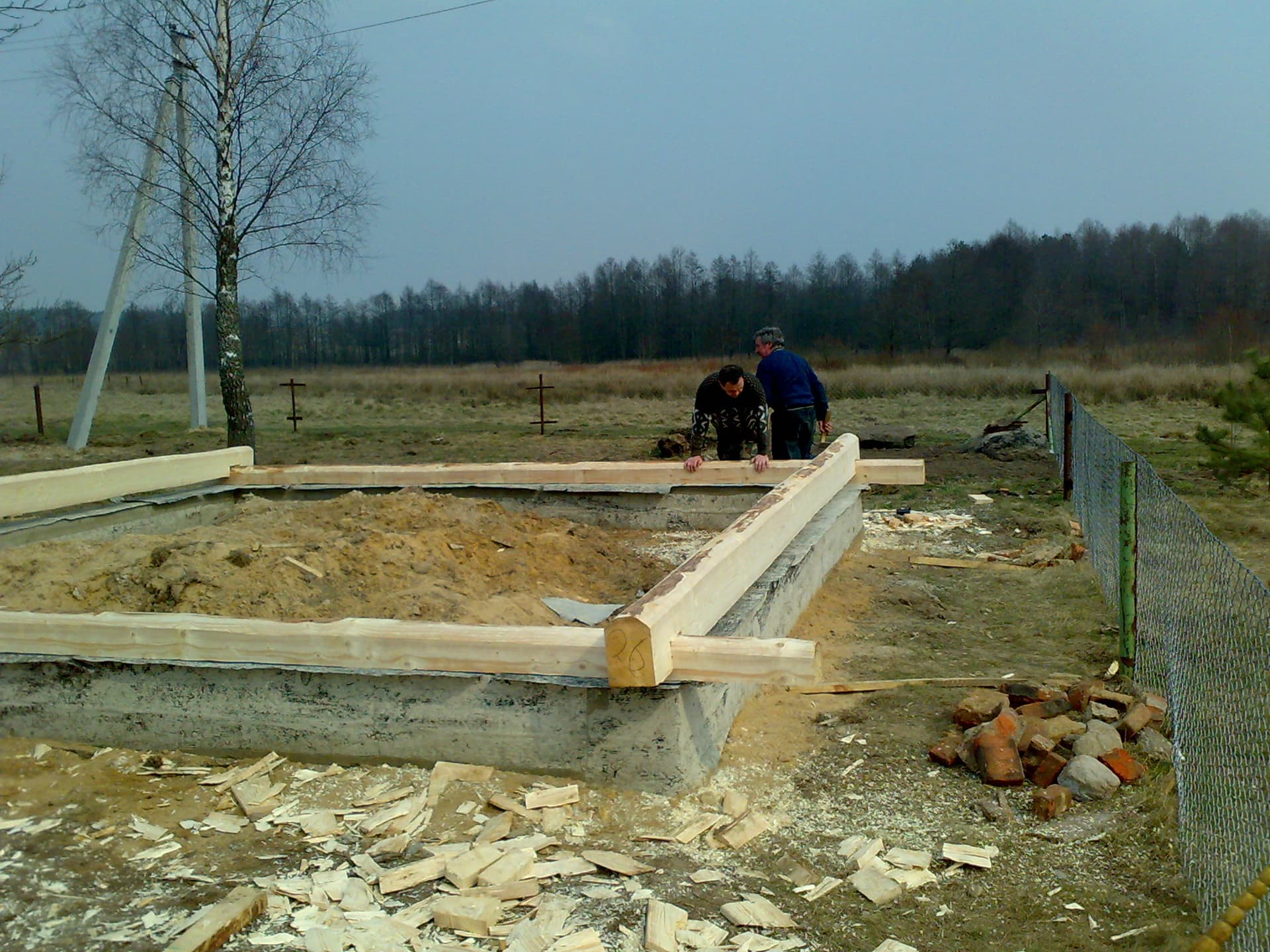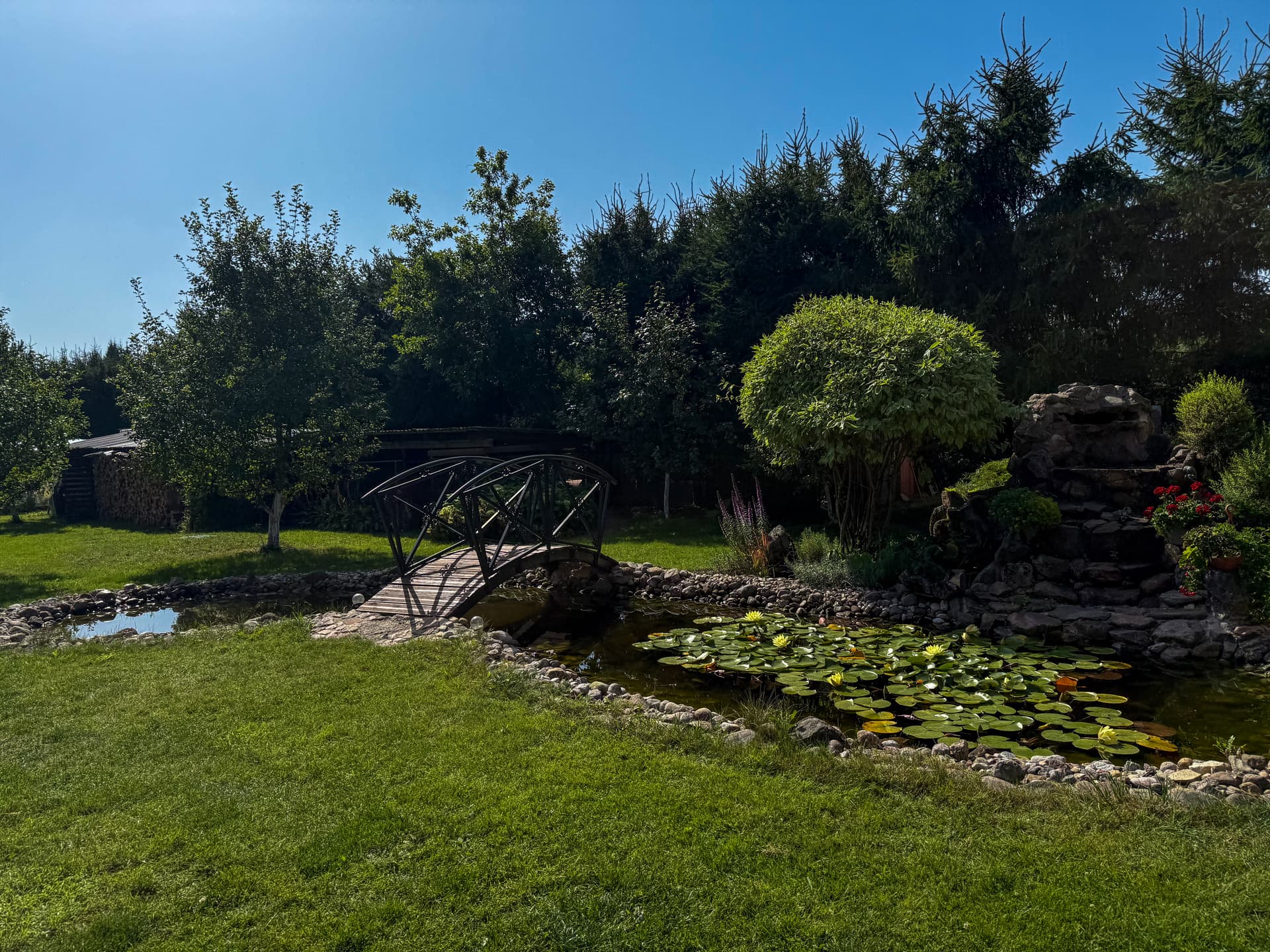
Our History
A Journey Through Rural Heritage
Milvados Kampelis is more than just a rural tourism homestead – it's a living piece of Lithuanian agricultural history. For over two centuries, this land has been cultivated, cared for, and passed down through generations, preserving the traditions, crafts, and wisdom of rural Lithuania. Join us on a journey through time as we explore the rich heritage of this special place.
Original Settlement
The area where Milvados Kampelis now stands was first settled by Lithuanian farmers. The fertile land and nearby forest made it an ideal location for a small farming community that relied on agriculture and forestry.
First Homestead Built
The first wooden homestead was built on this land by the Milvadas family, who gave their name to the area. The original structure included a main house, barn, and sauna, built using traditional Lithuanian log construction techniques.
Expansion Period
During this period, the homestead expanded with additional buildings including a granary, workshop, and expanded barn. The Milvadas family became known for their exceptional craftsmanship and agricultural innovations in the region.
Independent Lithuania Era
After Lithuania gained independence, the homestead flourished as a productive farm. New agricultural techniques were introduced, and the property became known for its dairy products and honey production.
Soviet Period
During the Soviet occupation, the homestead became part of a collective farm. Many original features were preserved, though some buildings were repurposed. The traditional knowledge of farming and crafts was maintained by the family despite the challenges of this era.
Restoration & Transformation
The property was lovingly restored to preserve its authentic rural character while adding modern comforts. Original buildings were carefully renovated using traditional methods, and new structures were built following historical designs. Milvados Kampelis was transformed into a rural tourism homestead to share Lithuania's rich agricultural heritage with visitors.
Traditional Architecture
Log Cabin Construction
The main buildings feature traditional Lithuanian log construction, with hand-hewn pine logs joined using dovetail notching techniques that have been used for centuries.
Thatched Roofing
Several buildings maintain authentic thatched roofs made from locally harvested reeds, providing excellent insulation and showcasing a disappearing rural craft.
Traditional Sauna
Our authentic Lithuanian sauna (pirtis) was built using ancient techniques, with smooth river stones for the stove and aromatic juniper wood for the interior benches.
Carved Wooden Details
Throughout the property, you'll find traditional Lithuanian wood carvings, from decorative roof gables (lėkiai) to intricately carved window frames and doors.

Stone Foundation
The buildings rest on traditional fieldstone foundations, gathered from the surrounding fields over generations of farming.
Traditional Barn
Our restored barn features the distinctive high-pitched roof typical of Lithuanian rural architecture, designed to shed snow in winter and store hay in the loft.
Preserving Rural Lithuanian Heritage
Lithuania has a rich agricultural tradition that spans thousands of years. Rural homesteads like Milvados Kampelis were the backbone of Lithuanian culture, preserving language, traditions, and national identity through centuries of foreign rule.
The traditional Lithuanian farmstead (sodyba) typically consisted of several wooden buildings arranged around a central yard. Each building had a specific purpose – from the main house (gryčia) to the barn (kluonas), sauna (pirtis), granary (svirnas), and workshop (dirbtuvės).
At Milvados Kampelis, we've preserved not just the buildings but also the traditional practices, from beekeeping and herb gardening to wood carving and weaving. By staying with us, you're experiencing an authentic piece of Lithuania's living cultural heritage.

Restoration Journey
Restoring Milvados Kampelis was a labor of love that took nearly a decade to complete. We worked with master craftsmen who specialize in traditional Lithuanian building techniques to ensure authenticity in every detail.
Traditional Methods Used:
- Hand-hewn logs using traditional axes and adzes
- Dovetail corner joinery without nails or screws
- Reed harvesting and thatching by local craftsmen
- Natural linseed oil and beeswax finishes
- Clay, sand, and straw mixtures for traditional plasters
- Hand-forged ironwork for hinges and latches
Preservation Principles:
- Preserve as much original material as possible
- Replace only what cannot be saved
- Use identical materials and techniques for replacements
- Document all stages of restoration
- Consult historical records and local knowledge
- Balance authenticity with modern safety and comfort
Main Farmhouse
The central farmhouse was in a state of disrepair with a damaged roof and deteriorating logs. We carefully dismantled it, numbered each salvageable log, and reconstructed it using traditional methods, adding modern insulation between the inner and outer walls.


Traditional Barn
The barn had partially collapsed and was overgrown with vegetation. We salvaged the original foundation stones and some of the timber frame, rebuilding it according to historical photographs and the memories of local elders.
Granary
The granary was one of the best-preserved buildings but required careful restoration of its unique elevated design (to keep grain dry and safe from rodents). We maintained its original function while adapting the interior as a cozy guest cottage.
Traditional Sauna
The original sauna had been lost to time, so we built a new one using ancient techniques. Local craftsmen selected the perfect stones for the stove and used traditional tools to shape the juniper wood benches, creating an authentic Lithuanian sauna experience.
Garden and Orchard
The overgrown land was cleared and restored to its traditional purpose. We planted heritage varieties of apple, pear, and plum trees documented to have grown here historically, and established garden beds for traditional Lithuanian herbs and vegetables.
Interior Details
Inside the buildings, we restored traditional elements like the massive clay bread oven, hand-carved furniture, and traditional textiles. These authentic details create an immersive experience of rural Lithuanian life.
Seasonal Traditions
Spring
- Jorė (Spring Equinox) celebrations with traditional games and rituals
- Planting ceremonies using ancient agricultural calendar
- Gathering of spring herbs for traditional medicines and teas
- Blessing of the fields for a bountiful harvest
Summer
- Rasos/Joninės (Midsummer) celebration with bonfire jumping and wreath floating
- Traditional hay making using hand scythes and rakes
- Wild berry gathering in the nearby forest
- Open-air feasts featuring seasonal produce from the garden
Autumn
- Harvest celebrations with traditional songs and dances
- Apple pressing for fresh juice and cider making
- Mushroom foraging expeditions in the surrounding woods
- Traditional food preservation methods including smoking, pickling, and drying
Winter
- Kūčios (Christmas Eve) with traditional 12-dish meatless meal
- Winter solstice rituals and log burning ceremonies
- Traditional crafts including weaving, wood carving, and straw ornament making
- Storytelling evenings around the traditional stove
At Milvados Kampelis, we celebrate these seasonal traditions throughout the year. Guests are welcome to participate in these authentic cultural experiences, which vary depending on when you visit. Check our events calendar to see what traditional activities will be happening during your stay.
Inquire About Seasonal EventsLiving Traditions
Traditional Farming
We maintain a small organic farm using traditional Lithuanian farming methods. Our garden features heritage vegetables and herbs that have been grown in Lithuania for centuries.
Guests can participate in seasonal activities from planting and harvesting to preserving fruits and vegetables using traditional methods.
Traditional Crafts
We preserve traditional Lithuanian crafts including weaving, wood carving, and pottery. Our workshop houses looms and tools that have been used for generations.
Visitors can try their hand at these ancient crafts through workshops led by local artisans who are keeping these traditions alive.
Culinary Heritage
Lithuanian rural cuisine has a rich history of hearty, seasonal dishes. We preserve these culinary traditions by preparing meals using recipes passed down through generations.
From homemade black bread and cheese to foraged mushroom dishes and traditional cepelinai, our kitchen celebrates the flavors of rural Lithuania.
Historical Artifacts
Throughout Milvados Kampelis, you'll discover authentic historical artifacts that tell the story of rural Lithuanian life. Many of these items were found during the restoration of the property, while others have been collected from the surrounding region.
These artifacts include traditional farming implements, household tools, textiles, and folk art. Each item provides a glimpse into the daily lives of the generations who lived and worked on this land before us.
We've created a small museum in the original granary building where guests can learn about these artifacts and their significance in Lithuanian rural culture. Many of these traditional tools and techniques are still used at Milvados Kampelis today, keeping these ancient practices alive for future generations.
Experience Rural Lithuanian Heritage
Stay at Milvados Kampelis and immerse yourself in the rich traditions of rural Lithuania while enjoying the peace and beauty of the countryside.
